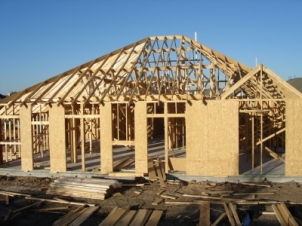
Credit Quality of Homebuilders Strengthened by Housing Recovery
By Sari R. Updated on 4/9/2013Though the nation’s economic recovery has been slow and sluggish in 2012 due to a lackluster job growth, one area jumped 20% when comparing 2012 to 2011 – new homes sales. Contributing to the growth of new home sales was increased apartment rents, all-time low home affordability, low home inventory and household formation increase. This new trend has been on the upswing even into 2013, with new homes sales up 29% in January and 12% in February over the same time period in 2011.
After many false starts, Standard & Poor’s Ratings Services predicts that the nation’s housing sector recovery that started last year will extend through 2014. This recovery will give support for the outlooks and ratings of homebuilders. Standard & Poor’s Ratings Services expects that there will be a minimal amount of negative rating actions over the next year. This is due to the fact that improved profitability will allow homebuilders to reinforce the balance sheets and pay for a growing percentage of growth for existing profits. As home sales increase, homebuilders will rely on the cash balances that have supported liquidity and ratings throughout the economic downturn to fund land and inventory investment. As these cash balances run out, there should be an increase in profits; liquidity will be supplemented by the adding of unsecured revolving credit facilities.
The force of positive rating will be measured, most likely, in cases where debt funds inventory and land investment that’s needed to uphold sales gains. Most homebuilders have taken advantage of open debt markets and low interest rates lately and have been funding growth by issuing debt. It is a possibility that growing debt balances could outgrow the expectations for operating profitability recovery. This would delay key credit metric recovery and would weigh on ratings for higher-rated builders. Though most homebuilders will have strong revenue over the next two years, improvement in credit measured will be restrained taking into consideration the fact that debt will be added to balance sheets. Overall, the upgrades for issuers will be one or two notches, even though ratings are expected to be raised.

Didn't find the answer you wanted? Ask one of your own.
-
 What You Need To Know About Escrow
View More
What You Need To Know About Escrow
View More
-
 President Obama Initiates Lower FHA Mortgage Insurance Premiums
View More
President Obama Initiates Lower FHA Mortgage Insurance Premiums
View More
-
 What is Quantitative Easing?
View More
What is Quantitative Easing?
View More
-
 The 5 New Mortgage and Housing Trends for Summer 2013
View More
The 5 New Mortgage and Housing Trends for Summer 2013
View More
-
 Fannie Mae profitability skyrockets
View More
Fannie Mae profitability skyrockets
View More
-
 Foreclosure protections for more soldiers after lawmakers draft bill
View More
Foreclosure protections for more soldiers after lawmakers draft bill
View More
-
 FHFA: HARP success follows low mortgage rates, February refinance volume strong
View More
FHFA: HARP success follows low mortgage rates, February refinance volume strong
View More
-
 Use of Mortgage Interest Deduction Depends on Where You Live
View More
Use of Mortgage Interest Deduction Depends on Where You Live
View More
-
 HUD will sell 40,000 distressed loans in 2013
View More
HUD will sell 40,000 distressed loans in 2013
View More
-
 Mortgage Principal Reduction Could Save Taxpayers $2.8 Billion
View More
Mortgage Principal Reduction Could Save Taxpayers $2.8 Billion
View More
-
 Mortgage Applications Regain Traction after Sluggishness, Rates Continue to Fall
View More
Mortgage Applications Regain Traction after Sluggishness, Rates Continue to Fall
View More
-
 HARP 3.0 Discussions Reveal Little Hope for HARP Update
View More
HARP 3.0 Discussions Reveal Little Hope for HARP Update
View More
-
 Home Prices Rise in February According to LPS Data
View More
Home Prices Rise in February According to LPS Data
View More
-
 Balancing Act: House Committee Hears Opposing Viewpoints Over Mortgage Interest Rate Deduction
View More
Balancing Act: House Committee Hears Opposing Viewpoints Over Mortgage Interest Rate Deduction
View More
-
 Near Record Low Mortgage Rates Buoy Housing Recovery
View More
Near Record Low Mortgage Rates Buoy Housing Recovery
View More
Related Articles
Ask our community a question.
Searching Today's Rates...

Featured Lenders
Lisa Stepp
RBS Citizens
Clifton Park, NY

